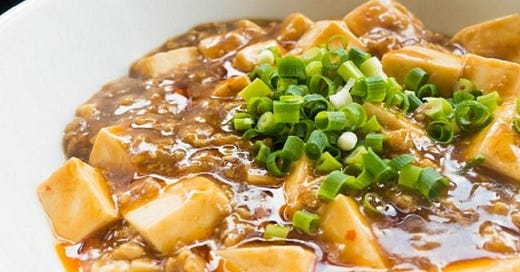Mabo Dofu マーボー豆腐 Mapo Tofu
What’s interesting is that while Mapo Tofu is originally a Chinese creation, the Japanese version, “mabo dofu,” has its unique twist.
EXPLORING THE ART OF JAPANESE CUISINE
Mabo Dofu, also known as the Japanese version of the famous Chinese dish “Mapo Tofu,” consists of minced pork, tofu, and onions simmered in a thick and mildly spicy sauce.
It is traditionally served alongside plain rice and is renowned for its gentle flavor profile, making it a favorite among both adults and children. Interestingly, it’s a regular feature in Japanese school lunches, adding to its popularity.
ORIGIN AND HISTORY OF MABO DOFU
Mapo Tofu, believed to have originated around a century ago in China’s Sichuan Province, owes its creation to a resourceful woman named Mrs. Chen. She lived in Chengdu, a bustling city with a street lined with tofu and mutton shops. With these local ingredients and an array of spices, Mrs. Chen concocted a dish that was not only spicy and delectable but was also thought to have healing properties. This hearty creation quickly gained fame across the city.
Now, the name of the dish has an interesting story of its own. “Mapo” is derived from the first parts of two Chinese words: “mázi,” meaning pockmarks (referring to scars from conditions like acne or smallpox), and “pópo,” which translates to “grandma.” Essentially, the dish is named after its creator, and it could be humorously translated as “Pockmarked Grandma’s Tofu.” In Japanese, these characters are pronounced as “mabo” and are written using the same Chinese characters or in katakana as “マーボー.”
Keep reading with a 7-day free trial
Subscribe to Nihon Bites to keep reading this post and get 7 days of free access to the full post archives.




